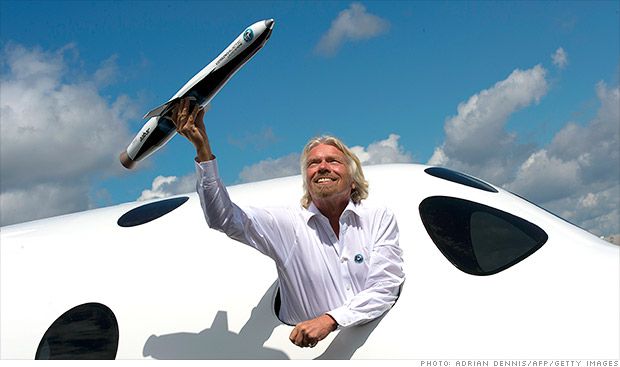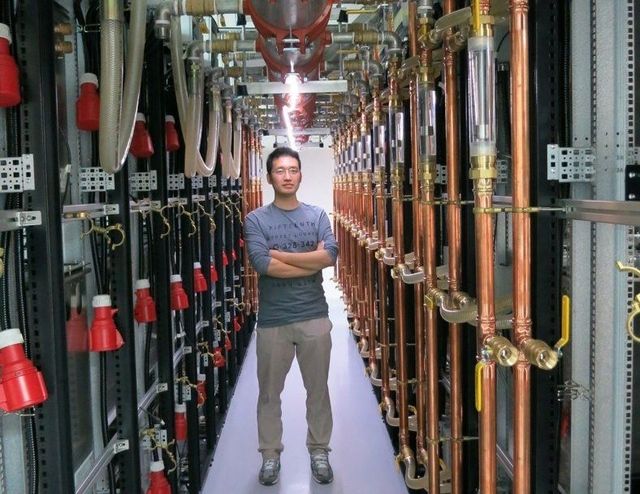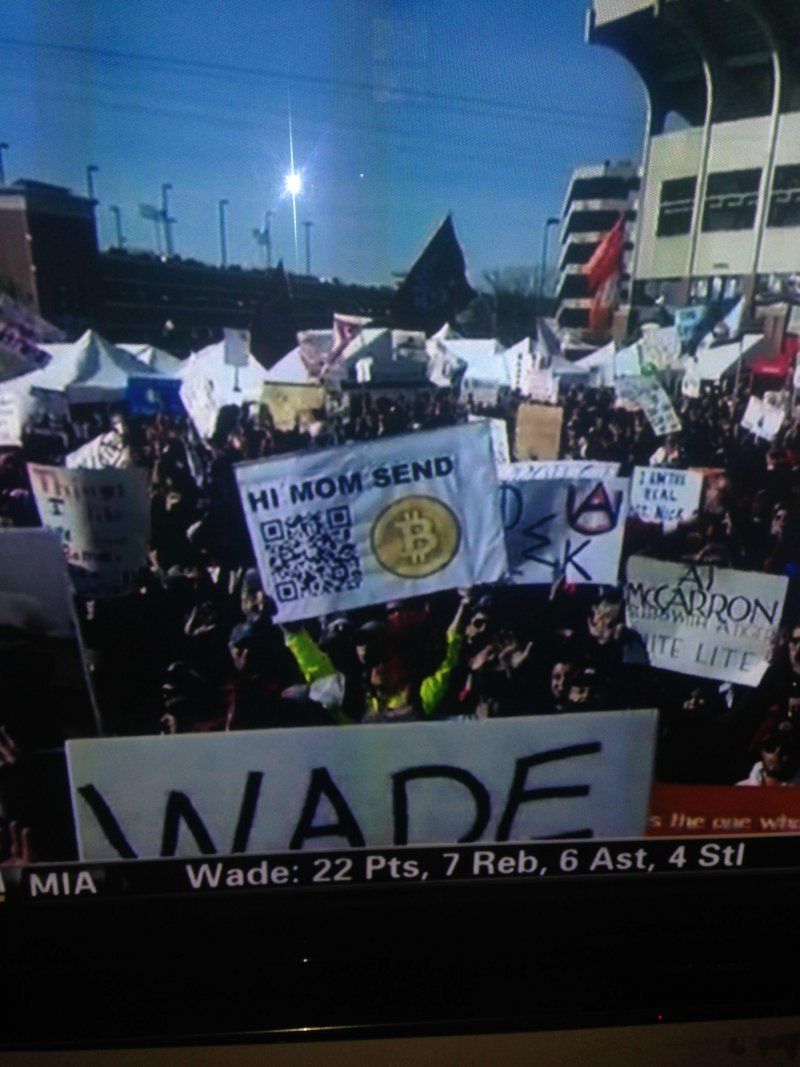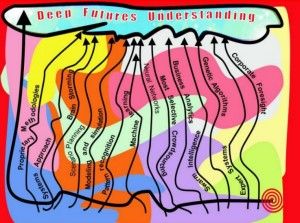Originally posted as Part III of a four-part introductory series on Bitcoin on May 21, 2013 in the American Daily Herald. See the Bitcoin blog for all four articles.
With gold prices back in the $1,300-$1,400/oz range it is sometimes difficult explaining to non-gold bugs why owning physical gold is still a good long term strategy. Some define buying gold as ‘an investment’, and others as ‘a hedge against inflation’. I tend to look at it as an insurance policy against hyper-inflation or just simply as sound honest money. However, when describing a strategy of accumulating money (in gold form) in some far-away vault, only to be used in some end-of-the-world scenario, it goes without saying that an image of a miserly old man replaces my likeness in the eyes of my conversation partner. Few people stuff dollar bills in their mattress any more, but hoarding of gold and silver when these were de-facto money was not unusual. Commodity money, which tends to increase in purchasing power over time, is predisposed to this ‘problem’. When you ‘love money’ so much that you hold on to too much of it or for too long a time, then you are hoarding.
Can ‘hoarding’ be defined?
Robert LeFevre once joked that while he was courting his soon-to-be-wife, he was impressed when she told him how much she loved money. Yet after they were married, it turned out that she really didn’t love money. In fact, she would try to find any excuse to get rid of it… in her shopping sprees, of course! Apparently money is no different than other goods and services; you trade one for the other. You trade the lesser valued good for the more valued good. When you make a purchase, you make a choice. You value your money less than the good you are buying. Similarly, when you refrain from purchasing an item, the indication is that your money is of more value than the foregone good. This is the basic premise in anticipation of a transaction, that both sides benefit – otherwise the transaction would not take place.
Hoarding money, be it paper, an electronic account balance, gold or bitcoins is therefore just the same as buying an excessive amount of books, stockpiling on your favorite pasta sauce jars when they’re on sale or refraining from throwing out your old National Geographic magazines. You never know when you might need them. You just prefer what you are hoarding to the alternatives out there. A larger stash of money means you prefer saving the money you have now for a later monetary exchange. That monetary exchange can be a purchase, paying your employee’s wages or giving your granddaughter a gift. But the amount someone saves/hoards is a reflection of their preferences and their understanding of reality with its inevitable uncertainties (and uncertainty is in no short supply these days). The negative term ‘hoarding’ is used, as Rothbard noted, when you are keeping more cash than someone else thinks is appropriate for you to keep. How very objective.
In actual fact, if a significant amount of money is hoarded and ‘taken away’ from circulation, the result is that there is an increased demand for money, which, in a world absent of price and wage controls, results in falling prices. Said differently, the purchasing power of money increases, meaning one would be able to buy the same amount with fewer money units. No evil has been perpetrated.
The dreaded ‘deflation’
The general decline of prices is described by mainstream economists as deflation. According to the Austrian School, on the other hand, deflation is merely the reduction of the money supply. Whether through significant hoarding, widespread bankruptcies or Federal Reserve actions, a drop in the money supply would cause a drop in prices, all else being equal. The distinction is that falling prices are the effect, not the cause. The effect could have other (often positive) causes, such as increases in productivity – the reason for falling prices in the high-tech world, for instance. In a market unhampered by political forces, as long as the quantity of goods rises relative to the quantity of money, prices will fall and the value of money will rise.
A common misconception is that reduction in prices equates to reduced profits and a general decline in the economy. ‘Revenues are not profits’ is one of the first things young accountants learn. Profits are a product both of revenue and of expenses, the money coming in and the money going out. With an increased purchasing power of money, input costs fall as well. Profits can and are made in a deflationary environment. The dreaded ‘deflationary spiral’ is a situation where a drop in prices leads to reduced demand, leading to more drops in prices as well as layoffs, which further hampers demand, and so the situation exacerbates itself. This scenario may occur when the general environment is an inflationary one, where people generally expect prices to rise as a normal, natural phenomenon. Then, through a deflationary cause, symptomatic of an ailing economy (e.g. widespread bankruptcies, rather than increased productivity), prices temporarily start to drop. Most people will see this as a temporary drop and will therefore postpone purchases. However this scenario cannot be an ongoing condition – eventually people need to start buying. In contrast, where the environment is deflationary (e.g. the high-tech industry), the assumption is not that ‘prices must rise’ and that ‘the drop is temporary’. How long has anyone really put off buying a computer, knowing that if they wait just one more month, they’ll get a better one? Eventually, you live with the fact that prices fall. And should prices drop due to positive causes, such as increased productivity, falling prices would actually engender demand. Increases in demand will ensure the firms’ profitability and the workers’ employability.
Deflation is not as bad as you think…
As we have seen, if the general economic environment is one of falling prices and the increase in money’s purchasing power, people would not continuously put off making purchases. Profits will be readily made as goods will cost less and practically create their own demand. But this is not all. Holding on to your money is like having a savings account or owning bonds. Saving for a nest egg in a deflationary environment does not require a high risk approach. Merely setting aside a part of one’s paycheck each month will yield more than social security ever could.
A further impact is that as people save more, interest rates fall. This drop in interest rates is a scenario that central banks across the globe are trying to replicate by ever more money printing. However, a naturally occurring low interest rate does not harm the holders of money much like the coercive version we see before us. Though deflation is thought to be bad for borrowers, debt would actually be cheap and readily available. If profits are made, debt will also be more easily repaid. True, a bad deflation (one which results from bankruptcies and economic woes) is generally bad for borrowers, since the real value of their debt rises and they have no additional profits and cash-flow to enable its repayment.
During inflation, on the other hand, money loses value. There is no doubt that the opposite scenario of constant inflation would be good for borrowers, regardless of the state of the economy. Is it any surprise that a government indebted to the tune of $16.7 trillion would prefer inflation to deflation? Where money is not a commodity, but is 90% debt (due to banks’ 10% reserve requirement), is there any surprise that anyone in the economics profession but the very fringe would tout inflation over deflation?
…but they still make you think it’s bad
The case for inflation and against hoarding or deflation is normally made more through an appeal to emotive factors than to the intellect. ‘Unspent dollars means reduced sales, drops in profit and massive layoffs. If firms go bankrupt, the raw material, capital goods and factories vanish into thin air’. You wouldn’t want that, would you? We already showed that increased saving on a massive scale and a reduction in the money base relative to the goods on the market, in and of itself, would only affect the purchasing power of the money and would not affect sales or profits. Companies may or may not go bankrupt – it all depends on whether their products satisfy the customers, not on quantity of money ‘in circulation’. Assets of those companies that do go bankrupt will only be bought up by another group of people who will try to utilize them better by building a better or cheaper product. Those parts of the economy that people do not value will get a signal that their value is dropping. These signals are important for the efficient functioning of the economy and for the satisfaction of the population at large. Where this signal is manipulated through injection of money into the economy or unnatural interest rate manipulations, a boom occurs, naturally and inevitably followed by the bust.
Going back to their arguments, that money must therefore be spent, is quite the visceral argument since everyone is an employee and everyone’s livelihood depends on other people spending money on them. It appeals to the desire for people to get something for nothing, or at least to earn money for as little work as possible. But in a free market, where people are not forced to buy a good they do not value, the customer is always right. You do your utmost to ensure you appeal to potential or repeat customers. An entrepreneur and all of her employees must strive for others’ satisfaction in order to make a profit – and many do so, successfully. There are no shortcuts in the lives of truly free market participants; you cannot force someone to fork over their money against their will (the case, of course, being different for government agencies funded through taxation). Yet the lazy slob in us all desires just this and the tool to achieve this is inflation. Through a constant devaluation of money’s purchasing power, people trade their money for real goods and services as fast as they can, thus ensuring dollars are not left unspent. Inflation causes fear-driven spending. ‘Spend now before it’s too late and your money becomes worthless’. A mild form of inflation would have the monetary base rise at the same level as ‘economic growth’, thereby keeping the purchasing power relatively stable, but the practical difficulties and the moral dubiousness of robbing one of their money’s value is still present.
An appeal to the intellect and common sense
Money, as a transmitter of value through space and time, must be ‘hoard-able’. It has to be durable so that one can hold on to it without its value dwindling. Holding on to depreciating money is like storing your candles all lit – not the best long-term solution. As I tell my non-gold bug friends, holding on to money in the form of gold is a good long-term strategy. It cannot be printed at will, its production is subject to free market forces of profit and loss, and its purchasing power increases over time. Who would not want money that increases in value? If you are uncertain of the future, the market or the economy, hoard away. One must put aside the red herrings incorporated into the inflationists’ arguments which lead to conclusions that: deflation is evil, saving is bad, debt is good, spending is necessary, etc. Savers, who forego current pleasures and build up future capital, are the backbone of a strong economy. As Doug Casey said, “You don’t become wealthy by spending and consuming, you become wealthy by producing and saving”. As my parents repeated to me time and again, “You cannot spend what you do not have”. And as common sense dictates, “You cannot borrow what someone else hasn’t saved”. Sound money is worth its weight in gold. Resist the arguments put forward on behalf of entities that are massively indebted – there is no evil in hoarding.



